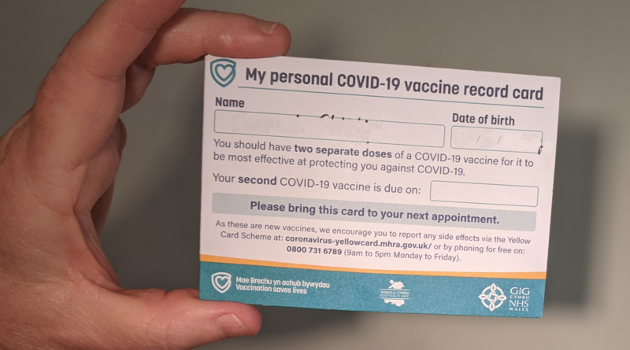I’ve written many times about the value of cost-benefit analysis for government policy.
My go-to example is that a nationwide 5-mph speed limit would reduce traffic fatalities, but the resulting economic damage would be so pervasive that there would a net reduction in life expectancy.
In other words, the indirect effects would outweigh the direct effects.
But that’s just a theoretical example.
We now have a real-world case study thanks to a remarkably short-sighted decision about the Johnson & Johnson vaccine by bureaucrats at the Food and Drug Administration (FDA).
Ronald Bailey of Reason is very blunt about the deadly consequences.
The U.S. Centers for Disease Control and Prevention (CDC) and the Food and Drug Administration (FDA) issued a statement today “recommending a pause in the use” of Johnson & Johnson’s COVID-19 vaccine…based on six cases of a rare blood clot disorder in people who had been inoculated with the one-dose vaccine. There have been six cases out of 6.8 million people who have already been inoculated with the vaccine. The blood clot incidents all occurred in women between the ages of 18 and 48. Those odds amount to one in 1.13 million, which is comparable to your annual chances of being struck by lightning (1 in 1.22 million). For comparison, a November 2020 meta-analysis in The Lancet found that more than one in five very ill hospitalized and post-mortem* COVID-19 patients experienced venous thromboembolism—that is, blood clots in their veins. A 2010 study in the Journal of American Preventive Medicine reported that the annual incidence of thromboembolism between the ages of 15 and 44 was about 1.5 cases per 1,000 people. In addition, the risk of blood clots from taking oral contraceptives is about 1 in 1,000 annually. …By focusing on the not-yet-proven, very low risk of blood clots versus the known risks of the increased misery, hospitalizations, and deaths that the Johnson & Johnson vaccine would have prevented, our overly cautious public health bureaucrats will likely cause more sickness and deaths among Americans than would otherwise have occurred.
Just in case you’re tempted to dismiss the above article because of Reason‘s libertarian perspective, Philip Bump’s article in the Washington Post makes the same point about tradeoffs.
It’s easy to imagine the internal debate at the Centers for Disease Control and Prevention upon learning that six cases of a rare, dangerous blood clot have been found in women who received the Johnson & Johnson vaccine. Allowing the vaccine to be distributed while experts reviewed the cases risks exposing more people to the possible problem. Pausing distribution, though, runs a different risk… Given that about 6.8 million doses of the Johnson & Johnson vaccine have been administered and that there have been only six such incidents, the rate at which those red dots occur is about 1 in 1.1 million vaccinations. …By way of comparison, every year about 12 in 100,000 Americans die in a car crash. …more than 561,000 people in the United States have died of covid-19, the disease caused by the virus. That’s about 1.8 percent of the 31.2 million people who have contracted it. Given the effectiveness of the Johnson & Johnson vaccine in preventing serious illness and death, vaccinating 6.8 million people could have…protected millions of people probably prevented thousands of deaths — with six problematic incidents.
Mr. Bump makes the broader point that each of us make cost-benefit decisions every day.
Nearly everything we do is a balance between risk and reward. Driving down the street, as mentioned above. Walking outside, where a meteorite could suddenly slam into your skull. Sitting on your couch, where your floor could give way or an electrical fire could break out or a bear could crash through your window. None of these things is likely, so we don’t worry about them, but they could. We draw a balance.
The people on Twitter who can do math (regardless of ideology) were united in their disdain for what the bureaucrats did.
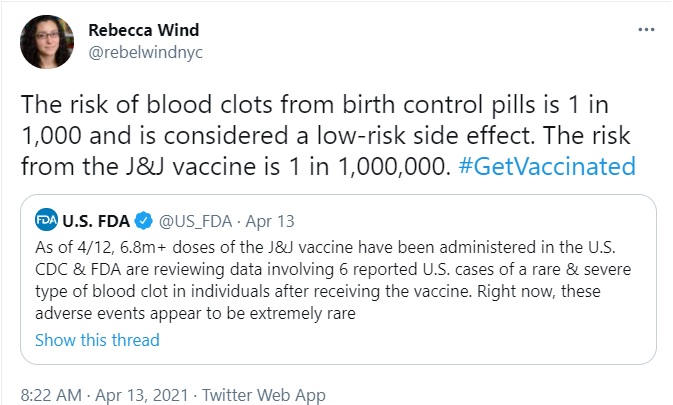
And:
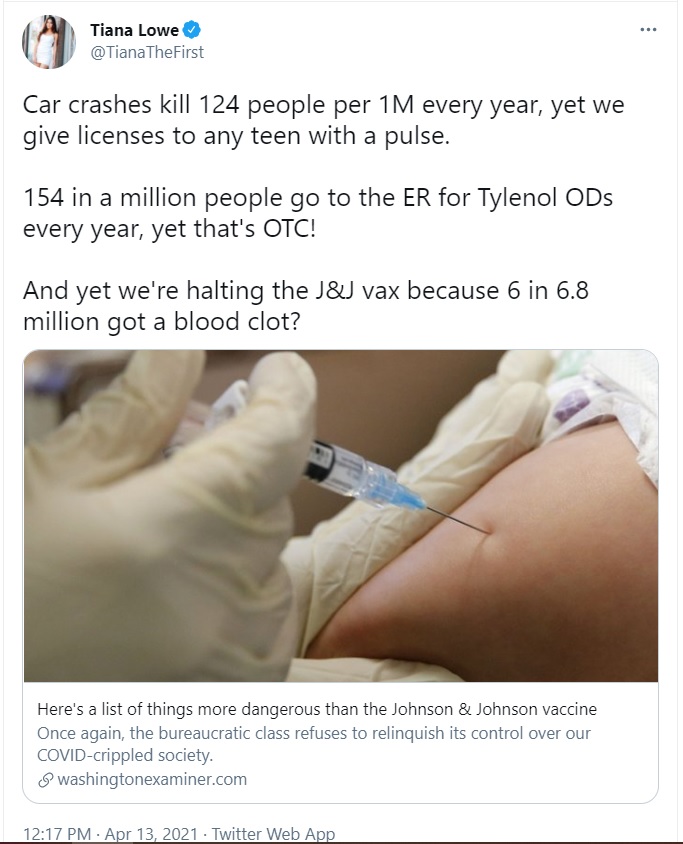
And:
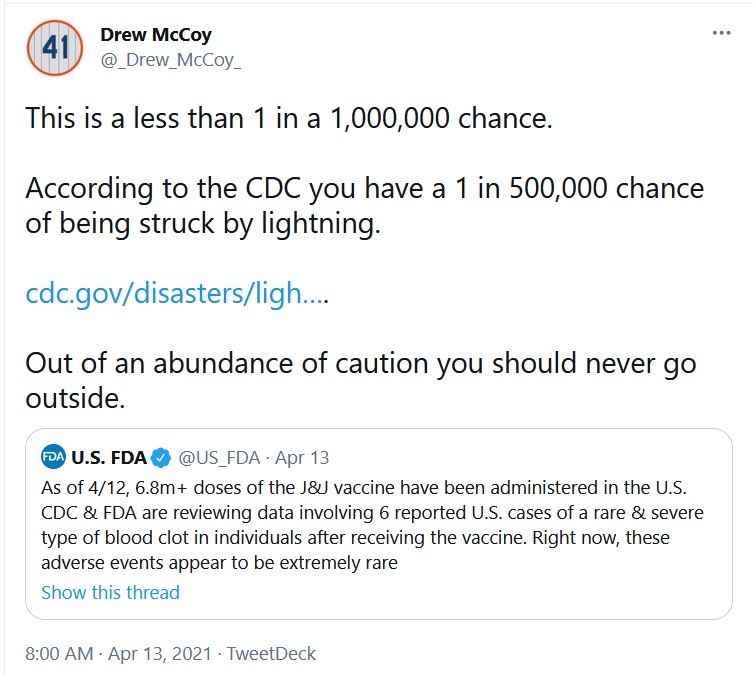
And:

And:
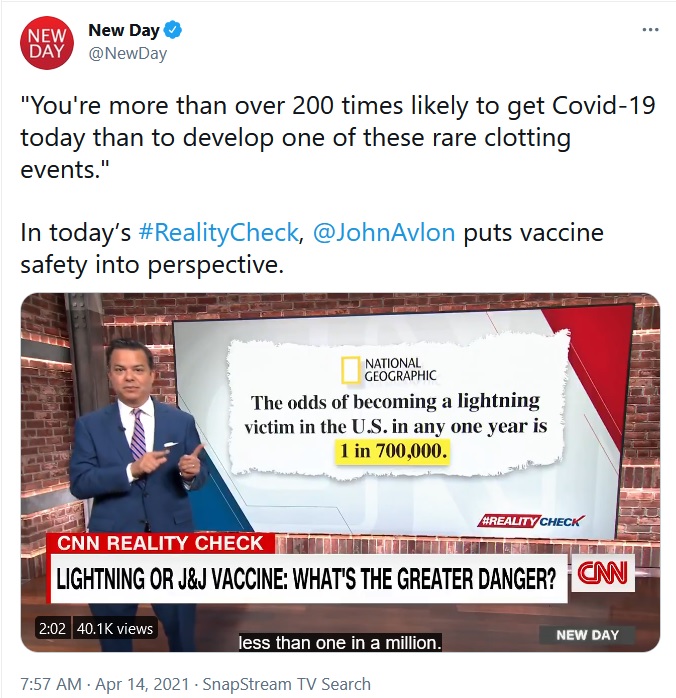
And:
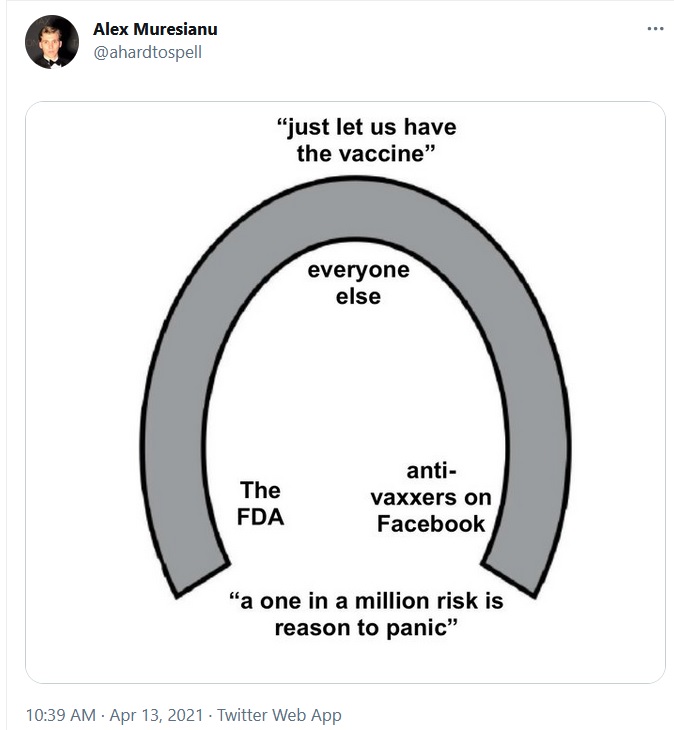
And that’s just a very small sampling.
For my modest contribution to this discussion, I want people to have liberty to take the J&J vaccine, regardless of the shameful actions of the bureaucrats in Washington (or their counterparts at the state level).
Indeed, I also want them to have the freedom to take the AZ vaccine.
Let adults make their own choices about costs and benefits, about risks and rewards.
That means they can choose vaccines (or not), as well as whether to vape, to own a gun, to donate/sell organs, or to try experimental treatments.
Liberty is not only a good principle, it also generates the best health outcomes.
P.S. To learn more about the harmful policies of the FDA, click here and here.
———
Image credit: Cwmcafit | CC BY-SA 4.0.

